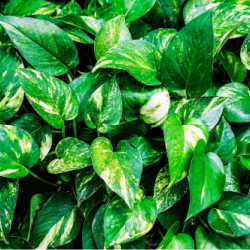 New research from the University of Virginia School of Medicine reveals how plants create the load-bearing structures that let them grow – much like how building crews frame a house.
New research from the University of Virginia School of Medicine reveals how plants create the load-bearing structures that let them grow – much like how building crews frame a house.
Funded by the U.S. Department of Energy, the new discovery unveils the molecular machinery that plants use to weave cellulose chains into cable-like structures called “microfibrils.” These microfibrils provide crucial support to the cell walls of land plants and allow them to build up pressure inside their cells. This pressure lets plants grow toward the sky.
“Cellulose is the most abundant, naturally produced polymer, and its building block, glucose, is a direct product of photosynthesis that captures carbon dioxide from the atmosphere,” said researcher Jochen Zimmer of UVA’s Department of Molecular Physiology and Biological Physics. “Understanding, on a molecular level, how cellulose is produced enables us to tailor its biosynthesis to alter the physical properties of cellulose, optimize carbon sequestration or extract the stored energy to fuel man-made processes.”
Read the full story by Josh Barney at UVA Today, 7/10/20.
